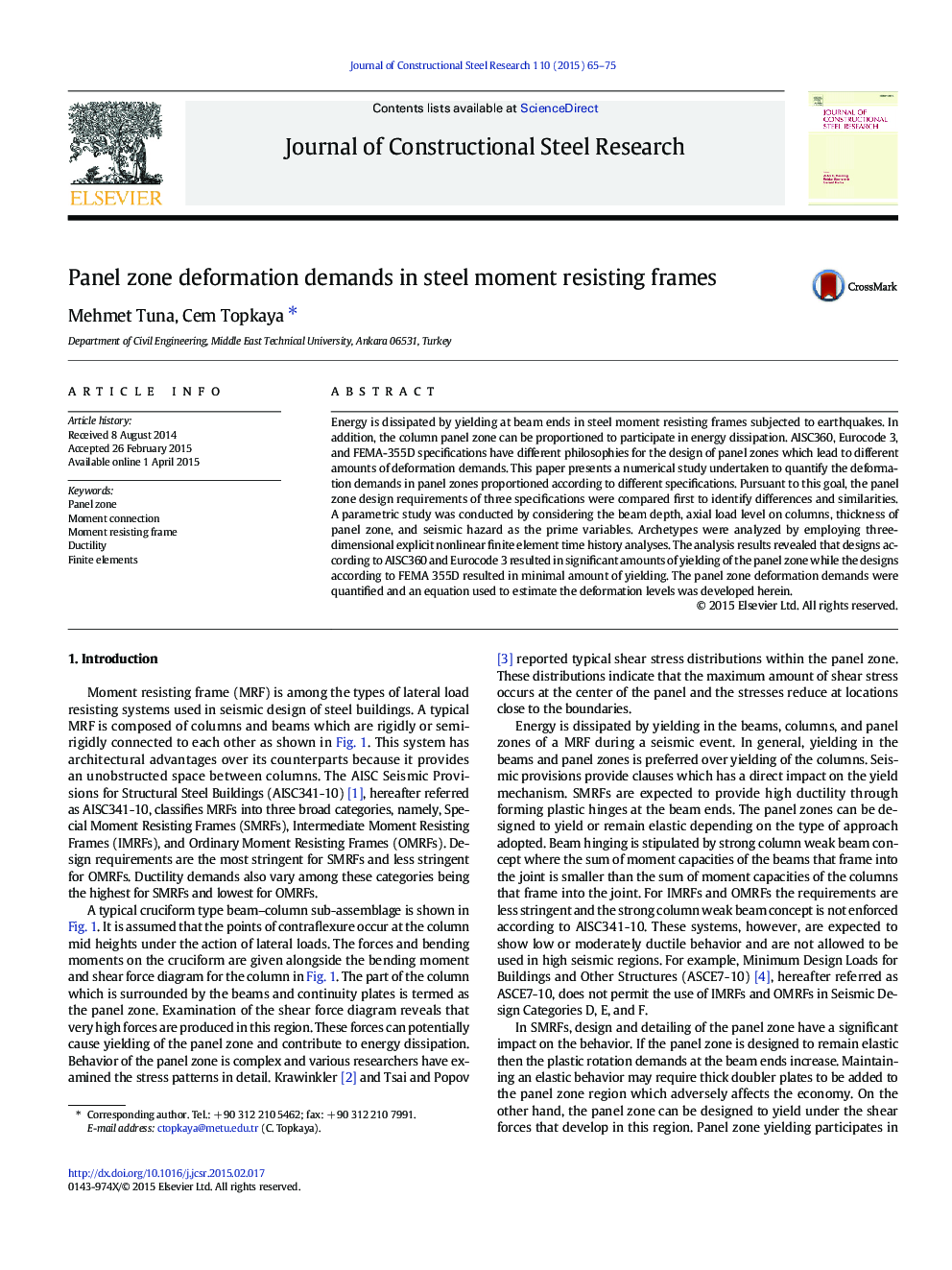| Article ID | Journal | Published Year | Pages | File Type |
|---|---|---|---|---|
| 284433 | Journal of Constructional Steel Research | 2015 | 11 Pages |
•Panel zone design requirements of FEMA355D, AISC360, and EC3 are compared.•FEMA355D results in higher demand-to-capacity ratios.•A simple expression was developed to estimate demand-to-capacity ratio.•Shear strain demands were studied through explicit finite element analysis.•An expression was developed to quantify the strain demand.
Energy is dissipated by yielding at beam ends in steel moment resisting frames subjected to earthquakes. In addition, the column panel zone can be proportioned to participate in energy dissipation. AISC360, Eurocode 3, and FEMA-355D specifications have different philosophies for the design of panel zones which lead to different amounts of deformation demands. This paper presents a numerical study undertaken to quantify the deformation demands in panel zones proportioned according to different specifications. Pursuant to this goal, the panel zone design requirements of three specifications were compared first to identify differences and similarities. A parametric study was conducted by considering the beam depth, axial load level on columns, thickness of panel zone, and seismic hazard as the prime variables. Archetypes were analyzed by employing three-dimensional explicit nonlinear finite element time history analyses. The analysis results revealed that designs according to AISC360 and Eurocode 3 resulted in significant amounts of yielding of the panel zone while the designs according to FEMA 355D resulted in minimal amount of yielding. The panel zone deformation demands were quantified and an equation used to estimate the deformation levels was developed herein.
